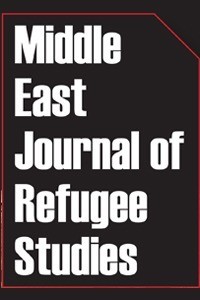Türk Sivil Toplum Kuruluşlarının Barış İnşa Çabalarına Desteği: Moro Barışı Örneği
STK'ların günümüzün çatışma çözümünde barışı inşa eden aktörler olarak rolü her geçen gün güçlenmektedir. Birçok siyasi aktörün çözmekte zorlandığı krizlerde, kolaylaştırıcılıktan barış gözlemlerine kadar birçok rolü sivil toplum kuruluşları başarıyla üstlenmektedir. Bu krizlerden biri, uzak Asya ülkesi Filipinler'in güneyindeki merkezi hükümet ile Müslüman azınlık arasındaki çatışmaydı. Kökeni 1960’lara kadar uzanan sıcak çatışmanın, 2014 yılında barış anlaşmasıyla sonuçlanması birçok açıdan tartışılmış olsa da, bu krizin çözümünde Türkiyeli sivil toplum kuruluşlarının katkısı oldukça dikkat çekicidir. Bir Türk STK'sının, İHH, barış gözlem misyonu olarak üstlendiği rol, bu konuda dünyanın farklı bölgelerindeki krizlerin çözümünde Türkiyeli kuruluşların oynayabileceği yapıcı roller konusunda cesaret vericidir.
Anahtar Kelimeler:
Moro Barış Süreci, Barış inşası, Türk STK'lar, İnsani diplomasi
Turkish Ngo Peacebuilding Contributions: The Case Of Moro Peace
The role of NGOs as peace builder actors in today's conflict resolution is getting stronger. In crises that many political actors have difficulty in resolving, non-governmental organizations successfully play many roles, from facilitating to peace observations. One of these crises was the conflict between the central government and the Muslim minority in the south of the distant Asian country of the Philippines. In this crisis, which resulted in a peace agreement in 2014, the role of the Turkish NGO, IHH, as a peace observation mission is an important example of success in this regard.
Keywords:
Peacebuilding, Turkish NGO, Humanitarian diplomacy, Moro Peace Process,
___
- Guelke, A. (2003). “Negotiations and Peace Processes” Contemporary Peacemaking Conflict, Violence and Peace Processes, (J. Darby ve R. Mac Ginty, ed.), Palgrave Macmillan, New York.
- Herbolzheimer, K. (2015). The peace process in Mindanao, the Philippines: evolution and lessons learned, Norwegian Peacebuilding Resource Centre, Report.
- Hernandez, M. B. (2017). The Philippines’ Moro Conflict: The Problems And Prospects In The Quest For A Sustainable Peace, Faculty of The School of Continuing Studies, Georgetown University Washington.
- Jubair, S. (2007). The Long Road to Peace Inside the GRP-MILF Peace Process, Institute of Bangsamoro Studies, Michigan.
- Koçyiğit, Ö. F. (2021). “The History of Philippine Society in Specific Muslim Moros, the Process of Autonomy and Turkey’s Contributions” Disiplinlerarası Yenilik Araştırmaları Dergisi, cilt 1, sayı 2.
- Lambourne, W. (2004). “Post-Conflict Peacebuilding: Meeting Human Needs for Justice and Reconciliation”, Peace, Conflict and Development, sayı 4, ISSN: 1742-0601.
- Lange, M. ve Quinn, M. (2003). Conflict, Humanitarian Assistance and Peacebuilding: Meeting the Challenges, London.
- Lauri, A. And Turunen, S. (2022). Forms of Humanitarian Diplomacy, Chr. Michelsen Institute and Norwegian Center for Humanitarian Studies.
- Lewer, N. (1999). “International Non-Governmental Organisations and Peacebuilding - Perspectives from Peace Studies and Conflict Resolution” University of Bredford Centre for Conflict Resolution Working Papers: No. 3.
- Minear, L (2007). “The craft of humanitarian diplomacy” Humanitarian Diplomacy: Practitioners and Their Craft, ed. Larry Minear and Hazel Smith, UN University Press.
- Özerdem, A. (2012). “The Contribution of the Organisation of the Islamic Conference to the Peace Process in Mindanao” Civil Wars, cilt 14, sayı 3.
- Regnier, P. (2011). “The emerging concept of humanitarian diplomacy: identification of a community of practice and prospects for international recognition” International Review of Red Cross, cilt 93.
- ISSN: 2149-4398
- Yayın Aralığı: Yılda 2 Sayı
- Başlangıç: 2016
- Yayıncı: Uluslararası Mülteci Hakları Derneği
Sayıdaki Diğer Makaleler
Türk Sivil Toplum Kuruluşlarının Barış İnşa Çabalarına Desteği: Moro Barışı Örneği
